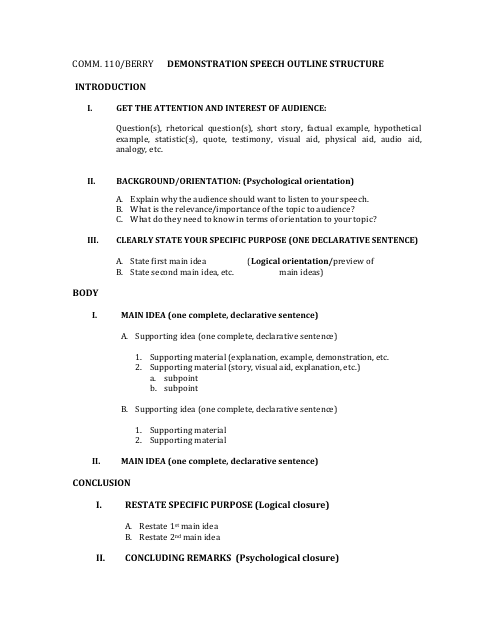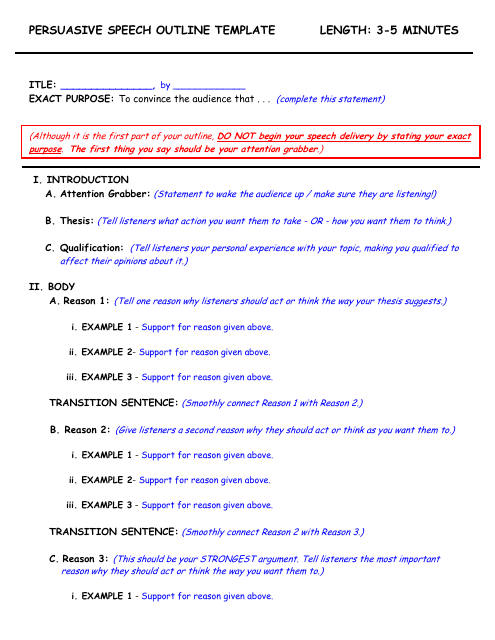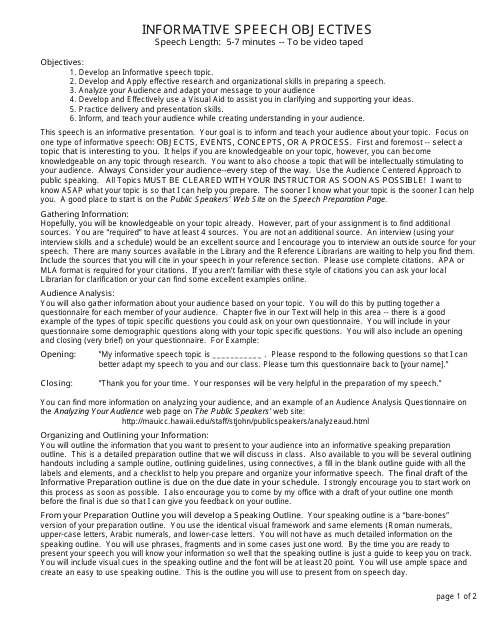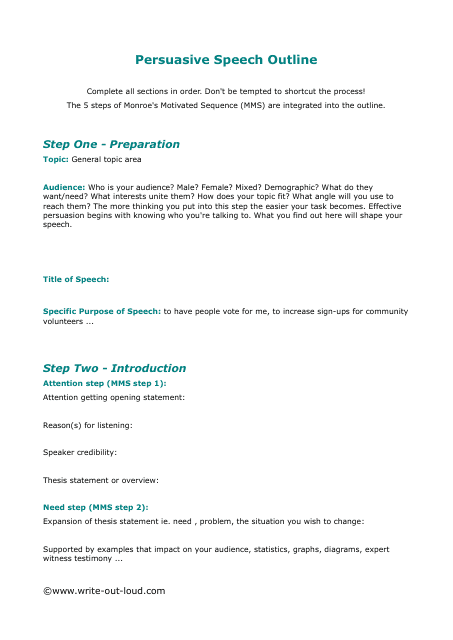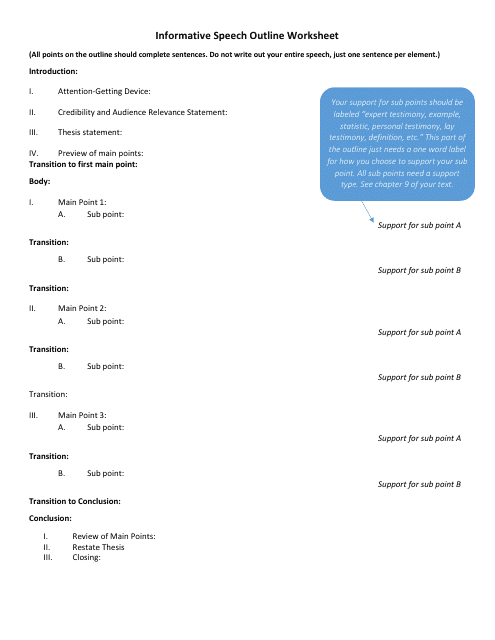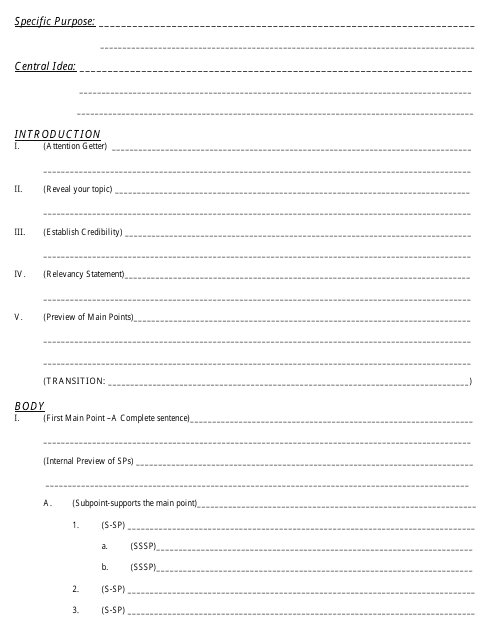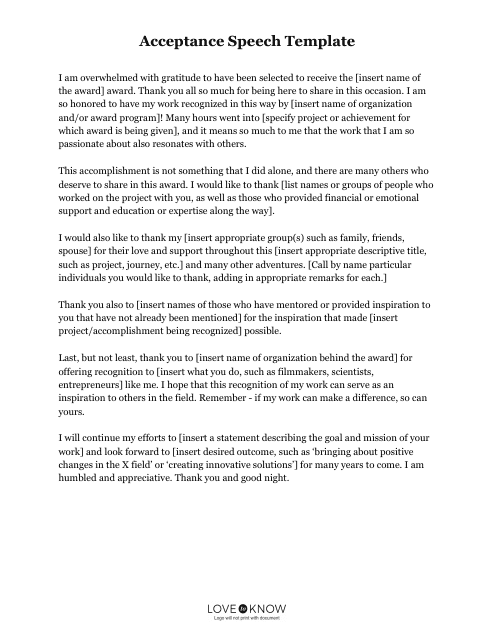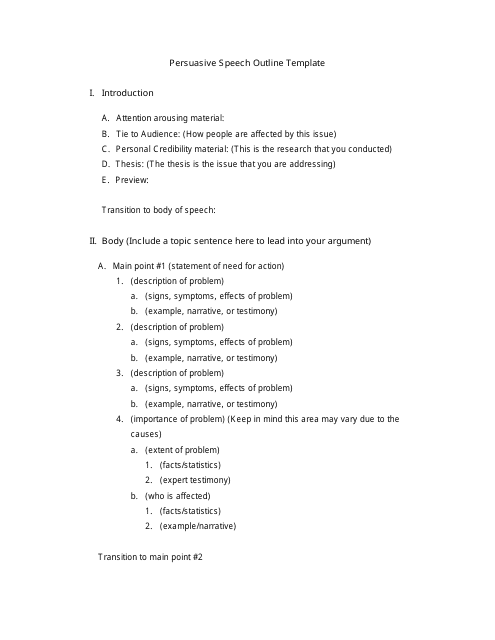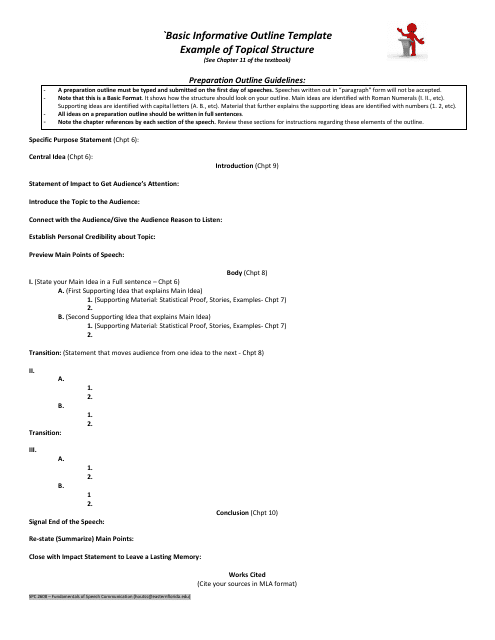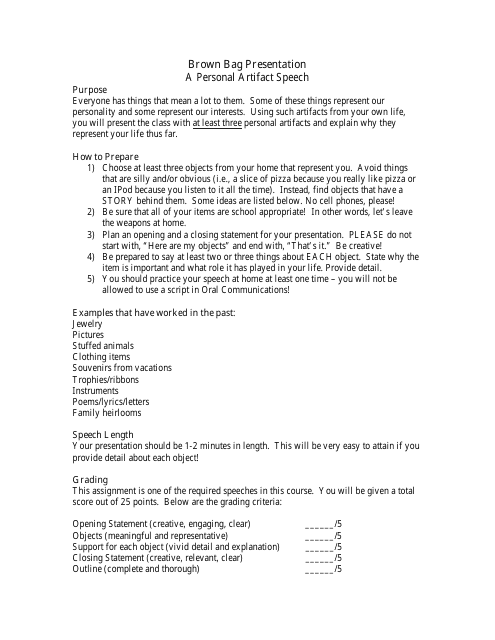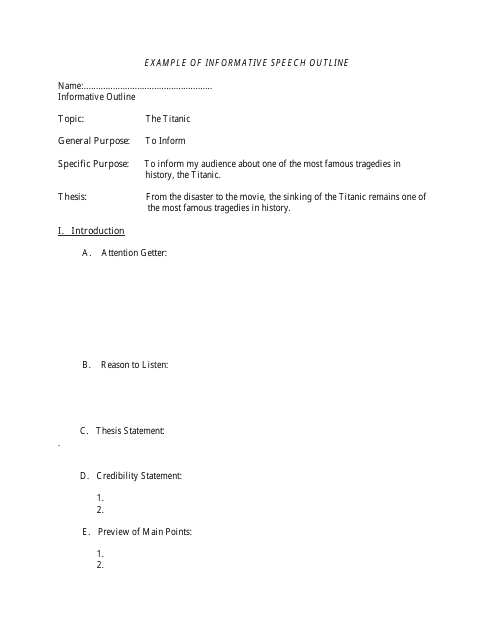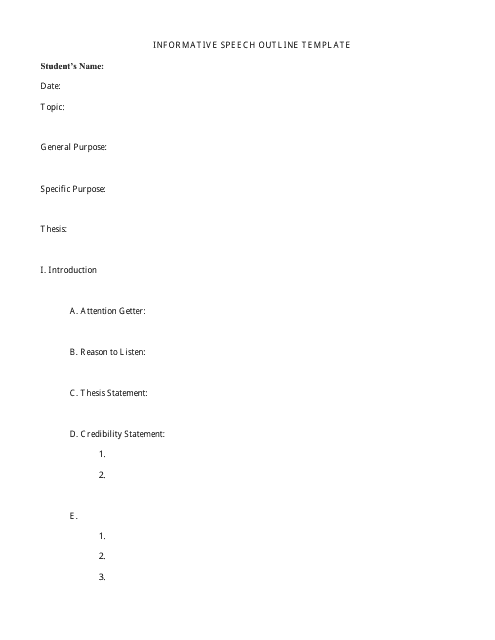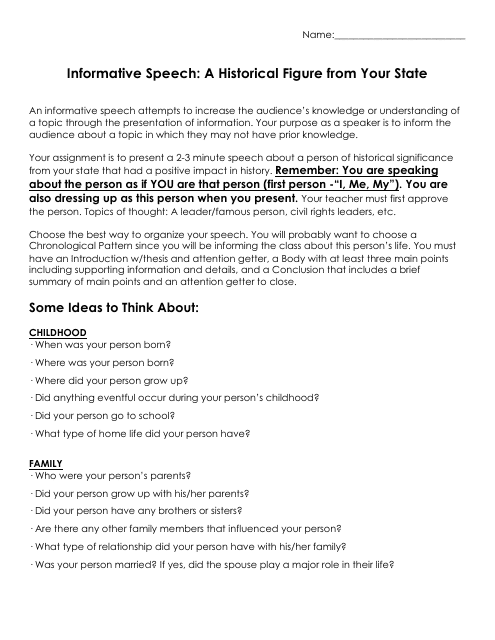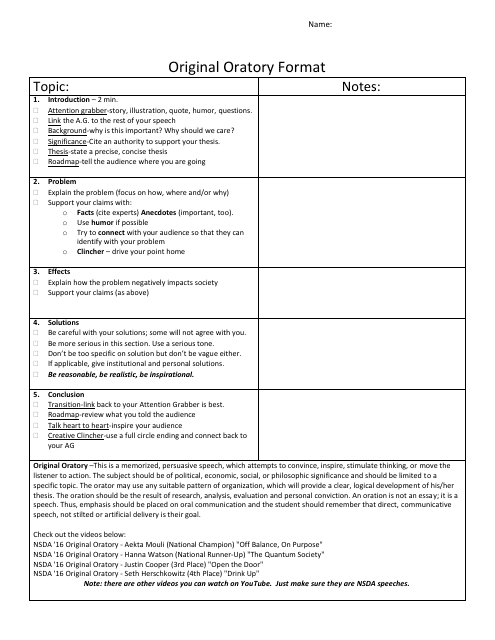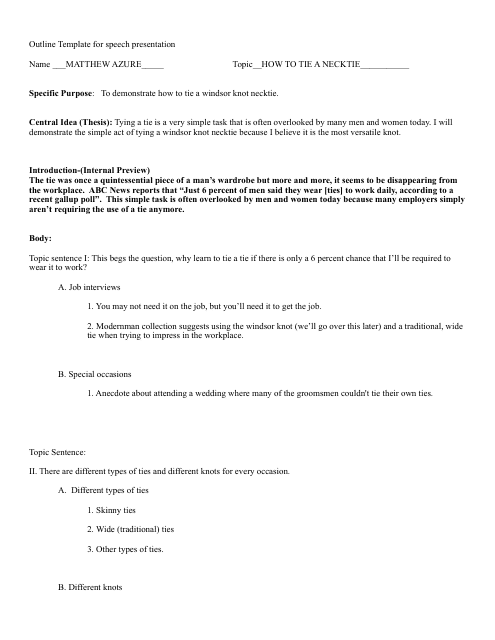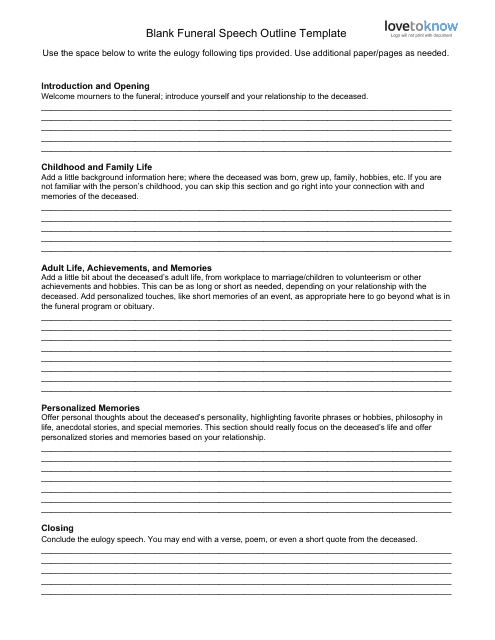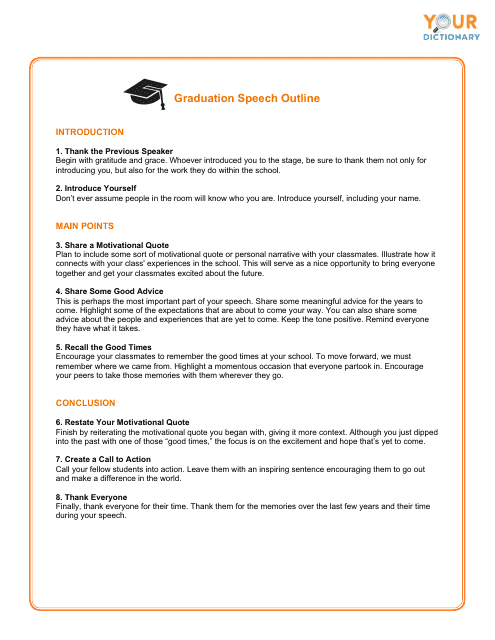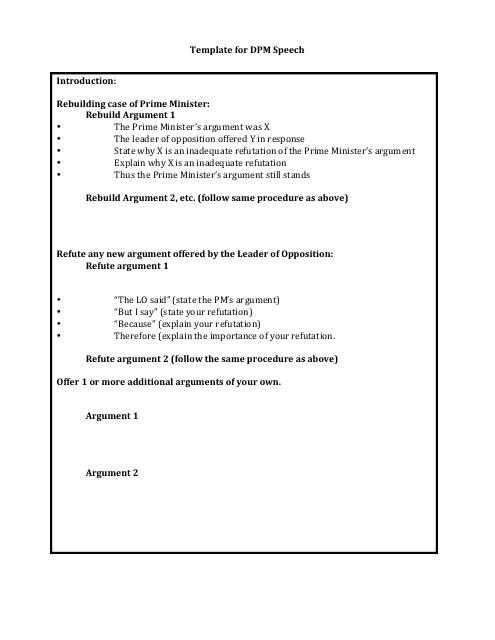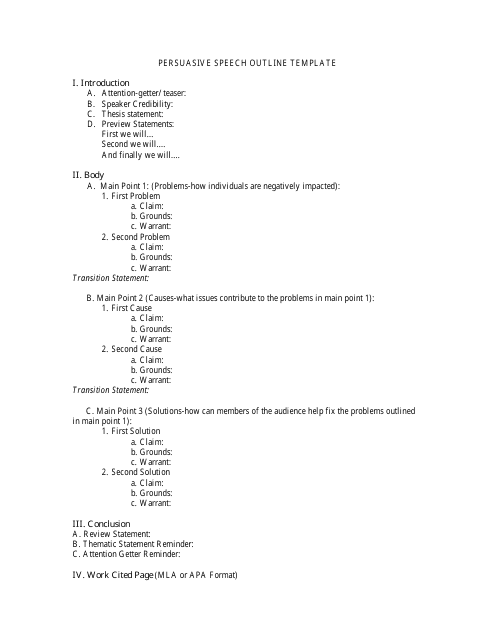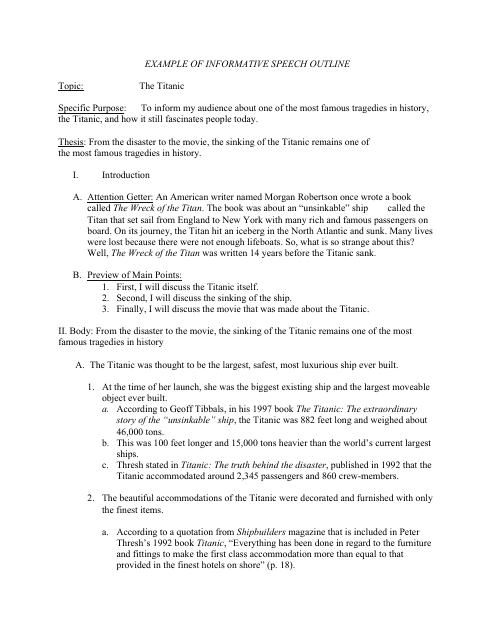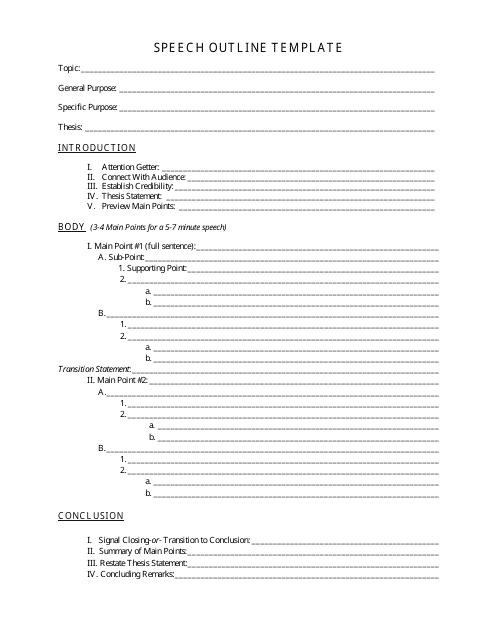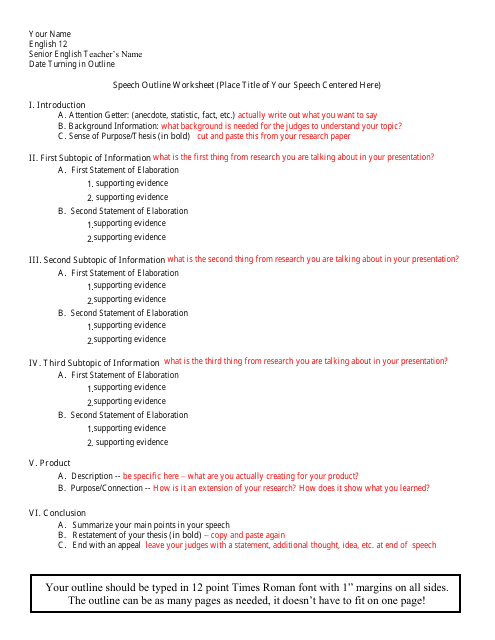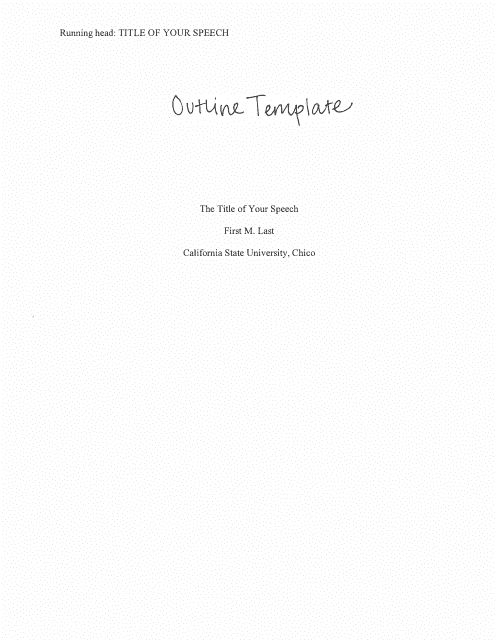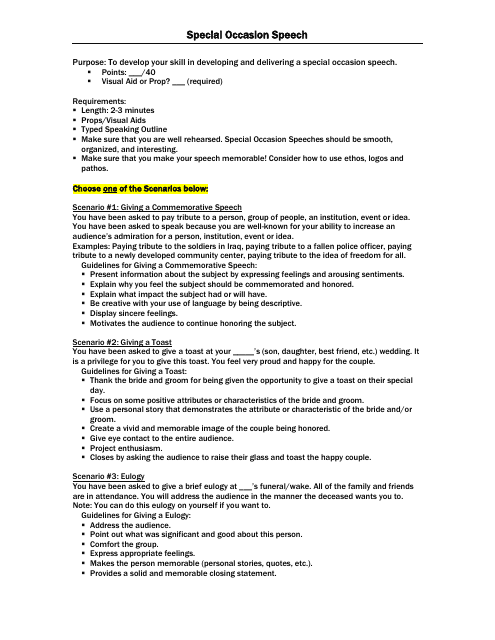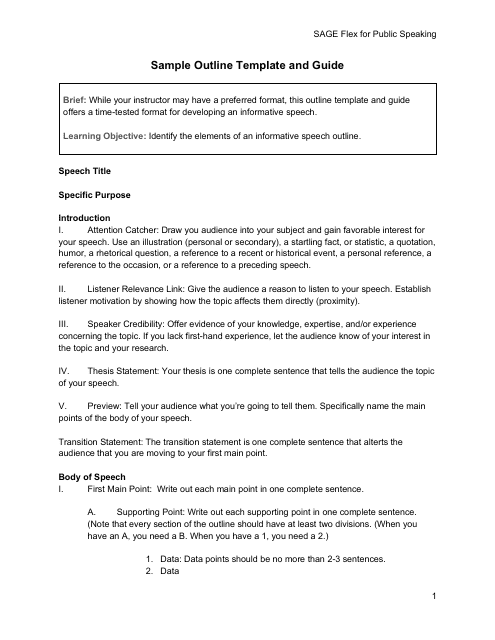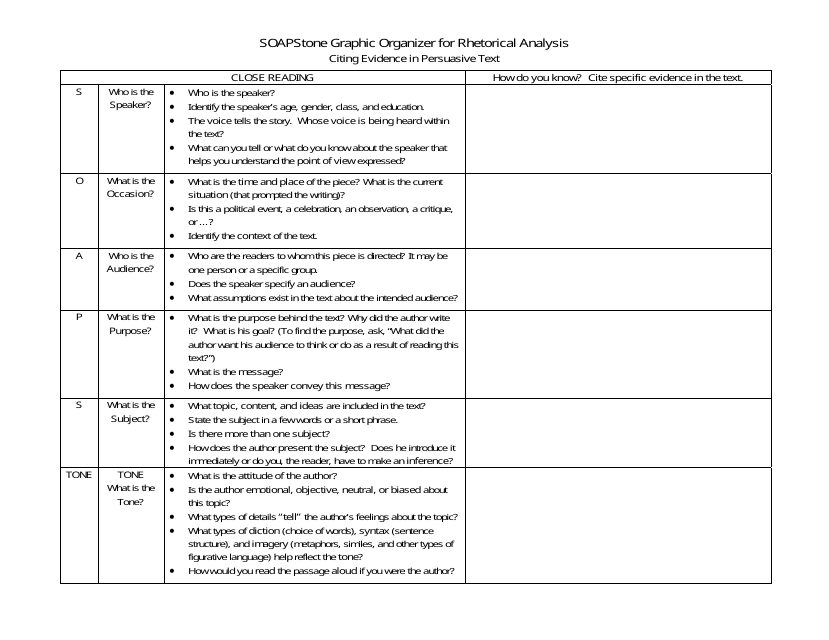Free Speech Outline Templates
What Is a Speech Outline?
A Speech Outline is a written overview of the key concepts and topics which will be discussed in a speech. It is a technique that supports efficient communication by assisting the person speaking in logically and cogently ways, organizing what they are thinking.
The structure below is often included in a speech outline template:
- The opening establishes the mood for the speech and draws everyone's interest;
- The big concepts and issues which are going to be discussed are contained in the main segment;
- The ending restates the speech's major theme and highlights its important elements.
The main function is to keep the speaker on course and make certain that they address every single crucial topic. Additionally, it ensures that the discourse runs naturally and that those listening can simply follow throughout.
For a full list of Speech Outline templates please feel free to check out our library below.
It's crucial to keep in mind both the intended audience and the speech's goal when drafting an outline for a speech. Since the purpose of an informative speech outline may be different from that of a persuasive speech outline, the template needs to be customized for the audience's needs and ought to be developed to accomplish a particular aim.
To further emphasize the essential ideas, the speech template ought to incorporate examples and illustrative data to back up any arguments.
How to Write a Speech Outline?
Writing a speech plan is an important part of preparation. By streamlining your concepts and thoughts, you can make sure that what you say is well-organized, cogent, and impactful. Below are some guidelines for developing a successful speech outline:
-
Decide on the goal prior to starting the creation of the outline. What do you hope that your address will accomplish? What point are you trying to make? Identifying what you want to achieve can assist you in concentrating your thoughts and producing a concise and efficient plan;
-
After you've decided on the objective, decide on the key themes you'd like to include. You need to make sure that the target audience understands these main points. Ensure that your major ideas are in line with the objective and are backed up by cases and supporting data;
-
After you've decided on the primary arguments, arrange them in a sensible and consistent sequence. This will assist you in organizing and producing an engaging talk. Putting your primary ideas in a logical sequence is a good method for arranging them;
-
Use appropriate proof, including data, quotations, and accounts, to back up your primary claims. Your argument will become more convincing and interesting as a result;
-
The opening ought to spark interest and establish the general mood. You can begin with a query, a personal narrative, or a startling fact;
-
The ending ought to reiterate your goal and recap your important points. A compelling quotation, a personal anecdote, or an appeal are all suitable ways to conclude;
-
Go over everything before yourself or in front of someone you know once everything is completed to gain experience and confidence.
Still looking for a particular template? Take a look at the related templates below:
Documents:
34

